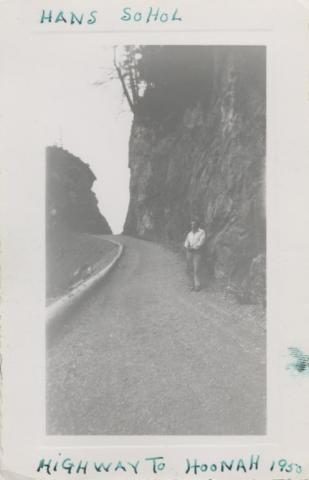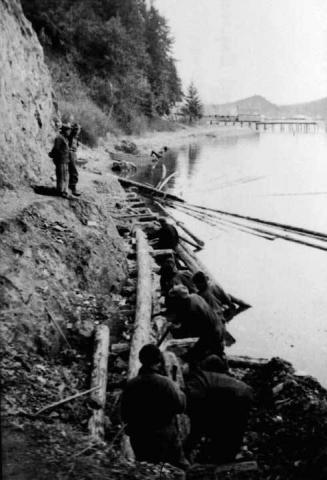Hoonah Tunnel 1950
The solid rock cliff was blasted to create a tunnel to provide access to the cannery for workers. The tunnel changed over the years, beginning with making it larger, then blasting it open. To this day this passage is still referred to as the tunnel by locals.
Johan Dybdahl tells a story of when he was a boy living down at the cannery and how his family would have to plan their walk to Hoonah around the low tides and keep mindful of the time so they could make it back during low tide as well. He explained that the roads weren't maintained or plowed in the winter, but that if they walked in during a low tide they could walk the beach up to the tunnel and at that point would have to walk up onto the road to get past the rock cliff and then climb back down to the beach.
The solid rock cliff was blasted to create a tunnel to provide access to the cannery for workers. The tunnel changed over the years, beginning with making it larger, then blasting it open. To this day this passage is still referred to as the tunnel by locals.
Johan Dybdahl tells a story of when he was a boy living down at the cannery and how his family would have to plan their walk to Hoonah around the low tides and keep mindful of the time so they could make it back during low tide as well. He explained that the roads weren't maintained or plowed in the winter, but that if they walked in during a low tide they could walk the beach up to the tunnel and at that point would have to walk up onto the road to get past the rock cliff and then climb back down to the beach.





